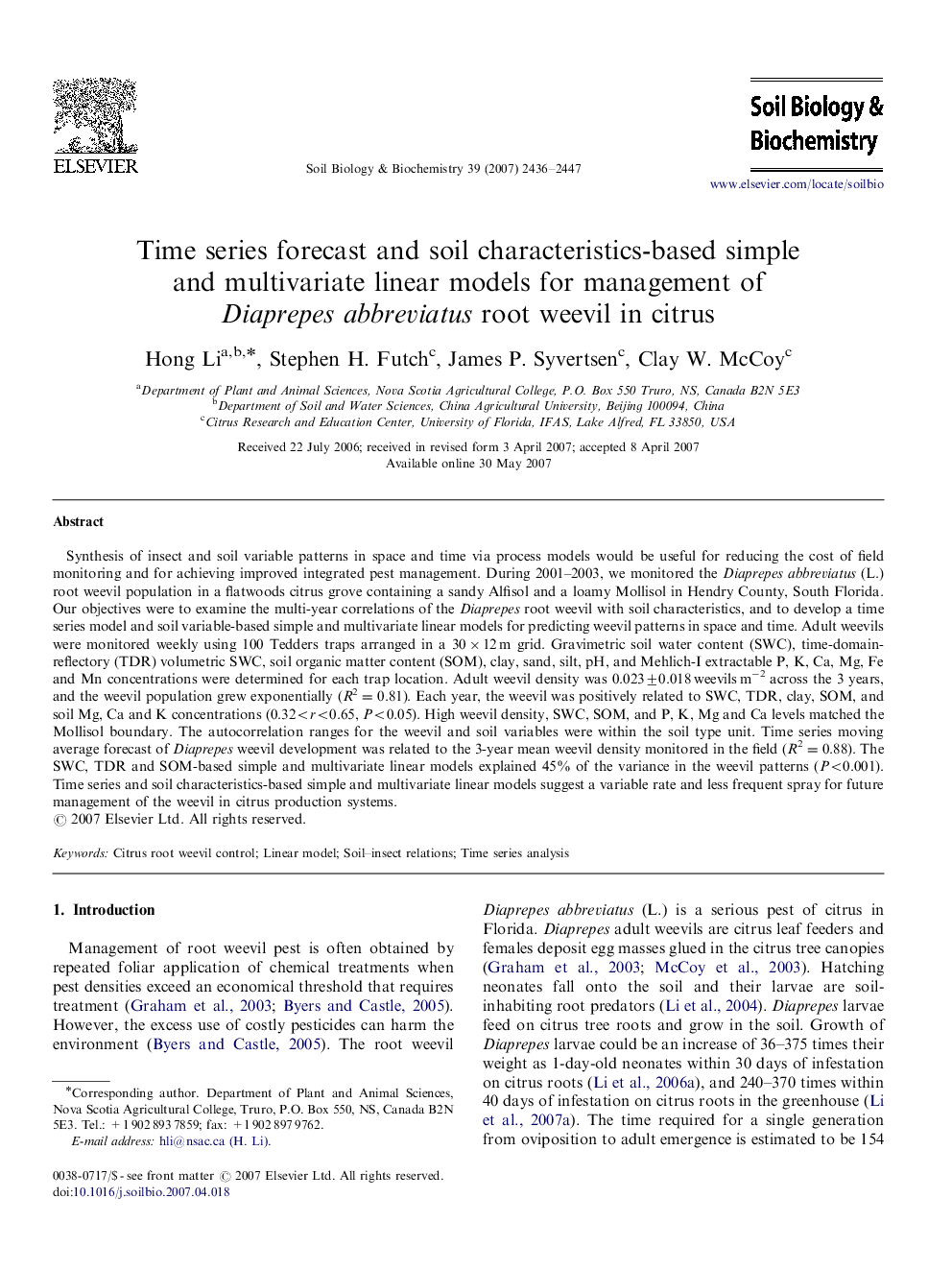| Article ID | Journal | Published Year | Pages | File Type |
|---|---|---|---|---|
| 2025908 | Soil Biology and Biochemistry | 2007 | 12 Pages |
Synthesis of insect and soil variable patterns in space and time via process models would be useful for reducing the cost of field monitoring and for achieving improved integrated pest management. During 2001–2003, we monitored the Diaprepes abbreviatus (L.) root weevil population in a flatwoods citrus grove containing a sandy Alfisol and a loamy Mollisol in Hendry County, South Florida. Our objectives were to examine the multi-year correlations of the Diaprepes root weevil with soil characteristics, and to develop a time series model and soil variable-based simple and multivariate linear models for predicting weevil patterns in space and time. Adult weevils were monitored weekly using 100 Tedders traps arranged in a 30×12 m grid. Gravimetric soil water content (SWC), time-domain-reflectory (TDR) volumetric SWC, soil organic matter content (SOM), clay, sand, silt, pH, and Mehlich-I extractable P, K, Ca, Mg, Fe and Mn concentrations were determined for each trap location. Adult weevil density was 0.023±0.018 weevils m−2 across the 3 years, and the weevil population grew exponentially (R2=0.81). Each year, the weevil was positively related to SWC, TDR, clay, SOM, and soil Mg, Ca and K concentrations (0.32
